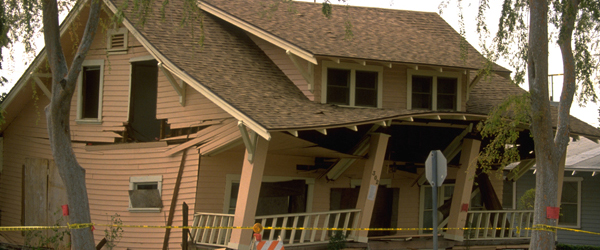
Are you prepared for an earthquake to strike your home? Do you have the proper coverage to cover such an eventuality? Do you even believe a major earthquake will occur anytime soon? Here’s some food for thought:
Earlier this month, experts from around the world met at the National Earthquake Conference in Long Beach. The San Andreas Fault was a big topic of discussion According to Thomas Jordan, director of the Southern California Earthquake Center, it is “locked, loaded and ready to roll.”
Anyone who has lived in California for even a little time knows the San Andreas Fault is the longest – and most dangerous – in the state. A cause for concern is that the last big earthquake to strike the southern portion of the was in 1857, when a magnitude 7.9 earthquake ruptured between Monterey County and the mountains near Los Angeles. A magnitude 7.8 earthquake on the southern San Andreas fault would cause more than 1,800 deaths, 50,000 injuries, $200 billion in damage and severe, long-lasting disruptions, according to a 2008 U.S. Geological Survey report. The Northridge Earthquake was a magnitude 6.7.
Consider taking steps to prepare for a quake. Put together an earthquake kit: water and non-perishable food for three days, plus a battery-operated radio, flashlight, and extra batteries. Visit the American Red Cross website (www.redcross.org) for a complete list of recommended supplies. Create an evacuation plan, including a specific location your family can gather. Everyone can—and should—participate in creating and practicing your plan. There are also smartphone apps that are useful in making up a disaster plan.
Remember that damage caused by earthquakes is not covered under standard homeowners or renters insurance policies, so look into purchasing a supplemental policy for earthquake damage. Some renters believe their landlord’s insurance will cover their belongings. That is incorrect. In California, there is the California Earthquake Authority (CEA). The CEA coverage limit is the insured value of the home as stated on the companion homeowners insurance policy with a deductible of 10 or 15 percent. You should also check to see if damage to your vehicle would be covered under the optional comprehensive portion of your auto insurance policy.
Of course, the time to make plans for surviving an earthquake, as well as making sure you have the resources to rebuild, is way before anything happens. Why take a chance with your future, as well as that of your family? Set up a meeting with your insurance professional and look at what coverage you have now and what all of your options are. Make sure you have the insurance you need before you need it.
